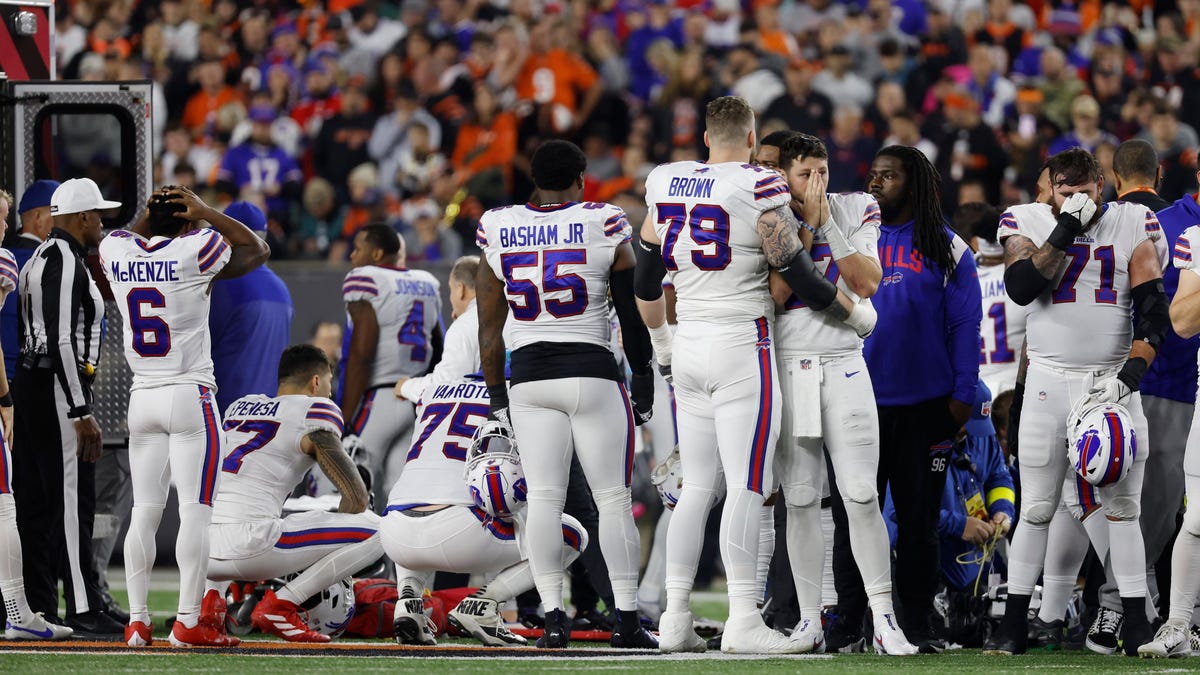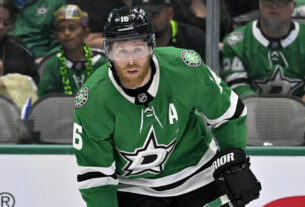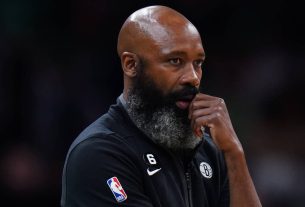
23.6 million people tuned into Monday Night Football between the Bengals and Bills this past week. 23.6 million people saw Bills’ safety Damar Hamlin nearly lose his life. That kind of image sticks with people, and I wouldn’t be surprised if several parents think of that moment in the future when considering signing their children up for youth football programs.
Youth football participation has dropped by more than 600,000 participants over the last decade and a half. After peaking with 2.5 million boys ages 6 to 18 playing football in 2008, the number has dropped to less than 1.9 million as of 2019. Do you think that’s a coincidence? It is absolutely not.
In 2005, pathologist Bennet Omalu published the first evidence of CTE inside the brain of a former football player — Mike Webster. The publication started drawing national attention in 2007 though. Although football had amassed an enormous participation rate in kids and adolescents, these new findings convinced more parents to remove their children from the sport.
Youth football participation was already in decline
Since then, youth football participation has been on a slow, but obvious decline. In California, participation in high school football has dropped in six consecutive years, and Hamlin’s injury is another huge nail in youth football’s metaphorical coffin.
G/O Media may get a commission
$50 off preorder
Ring Car Cam
It’s a camera. For your car.
The Ring Car Cam’s dual-facing HD cameras capture activity in and around your car in HD detail.
Despite not involving head trauma like most people are worried about in regards to football player safety, Hamlin’s injury was a rude awakening, reminding people the damage a sport like football can have on the rest of the body. Most people believe that what Hamlin suffered was commotio cordis, or chest trauma during an interval where his heart was resetting, causing arrhythmic death — although that hasn’t been confirmed yet. Even though commotio cordis incidents are considered “freak accidents” and is more common in sports with projectiles like baseball, lacrosse, and hockey than football, most parents are going to correlate Hamlin’s near-death experience with what they’ve already heard a million times about football — i.e.: the long-term health risks that come from playing the game — even if this incident is mostly unrelated to the sport.
Deadpsin spoke with Maryville associate professor of communication, Dustin York to figure out just how Hamlin’s nationally-televised collapse could hasten the drop in youth football participation, and how the NFL will attempt to keep America’s youth interested in football.
“The spotlight that has been put on this situation, deservedly, is huge. It’s become water cooler talk,” York informed Deadspin. “Mother, fathers, grandparents — everyone — was just reminded of the violence this sport brings. It’s more than just CTE and brain injury. It’s anything from broken bones to cartilage all the way to heart and chest trauma. It opens up that conversation that we’ve been so focused on CTE and head injuries that we’ve forgotten the dangers the sport can have on the rest of the body.”
The effect on sports parents
Hamlin recently woke up for the first time since Monday night. Everything appears to be going well in his recovery. That’s incredible news. However, York claims that even if Hamlin makes a full recovery and has a long, illustrious NFL career, that story won’t reach the same level of national attention that the initial injury did. Thousands of parents will only have the image of Hamlin laying unconscious in the middle of Paul Brown Stadium ingrained in their memories.
“A lot of these parents didn’t hear about Hamlin on ESPN, but FOX, CNN, and other mainstream news outlets. Those parents aren’t necessarily going to see the good news,” says York. “Maybe Hamlin turns out to be a Pro Bowler. Those parents will never see that, ever. They weren’t sports fans to begin with. CNN, FOX News, NBC, they’re not going to cover who made the Pro Bowl, right?”
A full recovery may not be expected, but it’s also not unheard of. In 1998, St. Louis Blues’ defenseman Chris Pronger suffered a commotio cordis incident after blocking a slap shot. This happened on live television (no, I’m not going to link the clip), and although he did miss a few weeks of the regular season, he made a full recovery, earning a Hart Trophy the very next season and a spot in the Hockey Hall of Fame. That doesn’t matter though. This Hamlin incident happened on a much larger stage, and drew much more national attention.
Obviously, the NFL can’t ignore the injury concerns that Hamlin’s collapse raised, although that’s probably what they’d like to do. York says the NFL’s crisis communication “playbook” would “advise never to address hypotheticals or future continued problematic risks, but instead focus solely on supporting the physical and mental health of Damar Hamlin.” However, given the potential ramifications that Hamlin’s injury may have on football in America, York believes the NFL has its hands tied.
“If I’m the NFL, I’m just trying to have as many safety conversations as possible, because the idea of wrapping this story around one person probably isn’t going to reach the non-sports fans.” York continued, “It’s going to be hard to eliminate that image of Hamlin nearly dying on the field from the minds of non-sports parents, and maybe it shouldn’t be eliminated. Maybe it’s good that parents are aware of the dangers that football can bring. But if they do want to keep non-sports parents comfortable with their kids playing football, the only way to do that is with a thorough, multi-year campaign to gain trust in player safety.”
That sounds great and all, but the NFL has been doing exactly this for years now, ever since the link between football and CTE was found. How does Hamlin’s injury change the course of direction for these safety campaigns? “The NFL has to keep using [Hamlin’s] name,” says York. “Very specifically, what they’re doing for him, for his teammates, and for the Bengals’ players who witnessed this as well. How are they emotionally supporting those players? That’s just the short-term though.”
How does the NFL move forward?
It sucks to think that the NFL would try to use Hamlin’s name as a reason to incite confidence in football’s safety moving forward, but York is sure that is what is going to happen in the immediate future. Long-term though, the NFL’s plan will more or less stay the same. Once the season has concluded, barring a serious setback in Hamlin’s recovery, the NFL will, in all likelihood, go back to talking about the safety of football as if Hamlin’s situation never happened.
It makes sense that the NFL would take such an approach. Due to the violent nature of the sport, it’s hard to talk about each and every individual health problem that could arise when someone plays football. “If the NFL starts fighting multiple health wars, they’ll start losing the overall safety battle,” explains York. “As long as the NFL is transparent and truthful in the steps they are taking to make everything as safe as possible, then they’ll be able to win over those unsure parents, because safety is their number one concern, not necessarily one area, but the overarching concept of player safety in football.”
The Hamlin situation is unprecedented in NFL football. Lions’ wide receiver Chuck Hughes died on the field in 1971 due to a blood clot, but the prevalence of social media nowadays makes Hamlin a much more talked-about incident. Even after Steelers’ linebacker Ryan Shazier was paralyzed during a Monday night game in 2017, youth football participation didn’t take a massive hit. California high schools lost only 2793 participants between 2017 and 2018, which is actually fewer than the state lost between 2016 and 2017 (3126).
That said, a near-death experience is an entirely different circumstance. It is the scariest thing a parent can witness, and I wouldn’t be shocked if the numbers fall off dramatically in 2023.
It’s impossible to know what could quell the concerns some parents have over the sport, but an immediate improvement in available medical technology at youth football games seems like an obvious first step. The New Orleans Saints have expressed interest in starting such a program to provide that technology.
Now, it’s the NFL’s turn. This is a billion dollar industry, and although the availability of medical technology may not prevent the long-term harm that football can create, this move by the Saints would be an effective short-term solution to the decrease in youth football participation. However, I doubt the NFL will do anything like this. I hope they do, but I doubt it.
Instead, they’ll use Hamlin’s recovery as a means to detail the sport’s safety. They’ll assure the public that they’re going to spend more money to find new ways to keep players safe, and they’ll keep the same course they’ve been on for more than a decade now. That’s not enough though. These are people’s lives we’re talking about — not just Hamlin, but all the players who suffered long-term consequences of the sport as well — and until the NFL finds a concrete way to minimize those risks, I can only hope Hamlin’s injury serves as a wake-up call to thousands of parents across the country. Football is dangerous.



